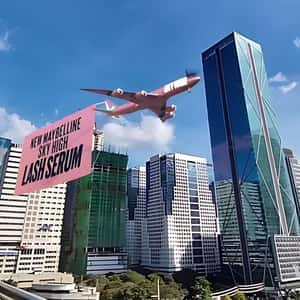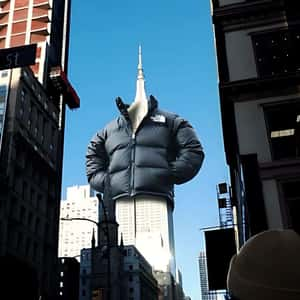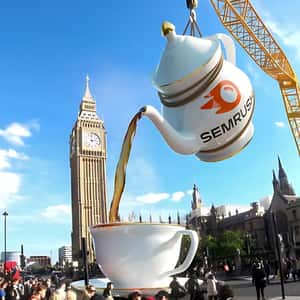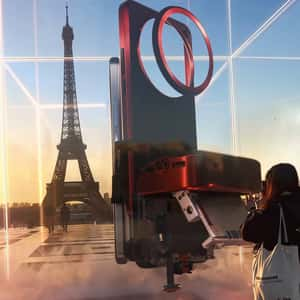FOOH Trends in 2025
What are FOOH trends in 2025? We break down the formats, aesthetics, and creator partnerships shaping 2025's biggest campaigns.
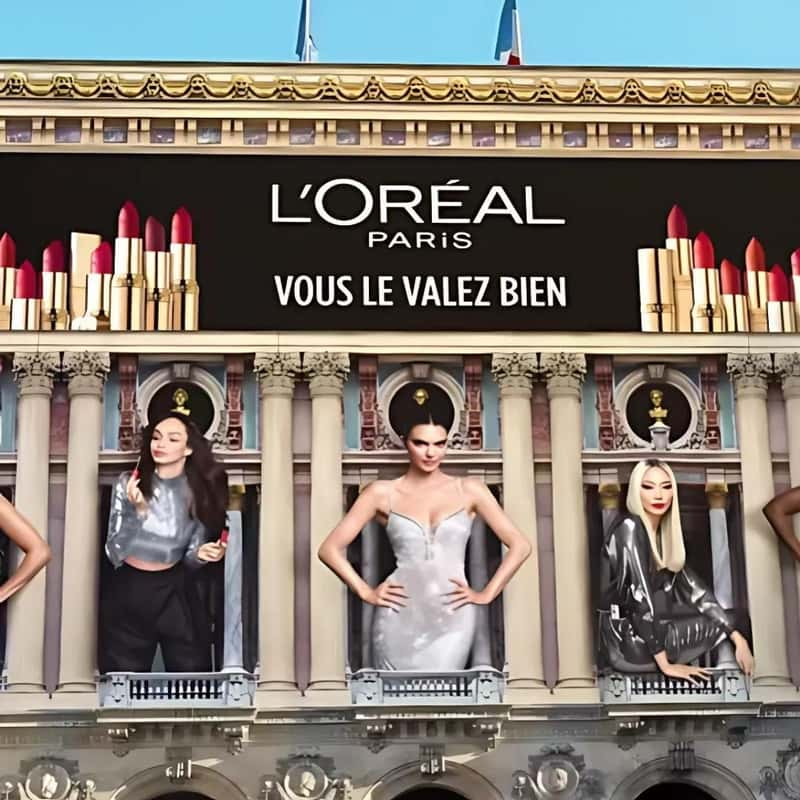
FOOH ads have become a marketing staple in recent years, and there’s no signs of it slowing down. As audiences spend more time online than ever, this kind of CGI-driven advertising has become a go-to for brands looking to stand out in fast-scrolling feeds.
This digital-only format offers massive creative potential: more visibility, stronger engagement, and organic virality. If you do it right.
But with more eyes (and brands) on this format, FOOH is entering a new creative era. In 2025, the most successful FOOH campaigns won’t just be the loudest, they’ll be smart, unique, and impossible to ignore.
From celebrity-led campaigns and niche influencers to surveillance aesthetics, here are the FOOH trends set to shape 2025 - and what smart marketers should be watching now.
6 Trends Defining FOOH in 2025
In recent years, FOOH ads have significantly increased since Maybelline’s viral lash campaign took over Instagram in 2023. To identify the top trends shaping the space in 2025, we analyzed standout campaigns that went against the grain and set new creative benchmarks for the industry.
Let’s take a closer look at the major themes driving FOOH for the next 12 months.
1. Celebrities in FOOH ads
Celebrities in commercials are nothing new. Since the dawn of out-of-home advertising, star power has been used to sell everything from perfume to potato chips. In 2024, 45% of Gen Z consumers purchased products endorsed by influencers or celebrity brands. And FOOH takes that visibility even further in 2025.
For example, a recognizable face like Kendall Jenner paired with an iconic backdrop like the Eiffel Tower can create a video that’s instantly memorable, racking up 8 million views. It’s cultural currency - and brands can maximize this impact when the celebrity’s expertise aligns with the product or industry featured in the FOOH ad.
Same goes for this Adidas spot featuring Jude Bellingham:
A football legend receives a boot designed around his name. It’s not just good storytelling – it’s good strategy. The result? 13 million views and a campaign that feels both relevant and intentional. And finally we have Damiano David, who brings a different kind of presence to this FOOH ad for Sony Music:
The ad promotes his newly released single, cleverly woven into the concept without being overt. His presence adds not just recognition, but edge, and musical credibility — all while building anticipation around the viral song in a visually fresh way.
In 2025, celebrities in FOOH campaigns serve the same strategic purpose they always have but now they’re amplifying a format already built for visibility. Pairing the right story with the right star in the right setting doesn’t just result in attention. It’s impact.
2. Cinematic FOOH
About 90% of FOOH ads are filmed outdoors, often with a subject framed against a busy street, skyline, or recognizable landmark. These settings have become the default FOOH formula. But some creators are flipping the script.
Take this Mazda ad: a man steps into the street as parts of a Mazda CX-60 fly towards him and assemble around his body, Iron Man–style. The camera follows the car as it drives off, then loops back to start again.
For a closer look at how luxury car brands use fake out of home advertising to create viral impact, see how Porsche and Lamborghini’s ads go viral with their strategy.
And it resonated too, garnering over 232,000 likes.
Jacquemus took a similar route. In their FOOH ad, oversized cherries tumble down storefront stairs and spill into the street. The video is then intercut with shots of a cherry-topped sundae and pieces from their new collection.
Pops of red tie the whole thing together, combining hyperrealistic CGI ads with product in a way that’s playful, stylish, and on-brand. The ad racked up over 2.3 million views - hinting at a growing appetite for cinematic, CGI-led storytelling.
3. Surveillance-Cam Aesthetic
Another emerging FOOH trend in 2025 is the use of CCTV-style angles that mimic the look of found footage. This deliberate design choice works precisely because it doesn’t feel like an ad. This intrigue is what holds the viewer to watch and finish the ad because they think: ‘wait, what’s going to happen next?’
Aritzia plays right into this. Filmed from a single overhead security cam, a shopper approaches a giant box in the middle of the store. When she touches it, it bursts open, sending puffer jackets flying in every direction.
The set up is simple, which is perfect in building tension and capturing attention in seconds. The result? An ad that feels like a strange in-store moment caught on tape rather than a product launch.
Galeries Lafayette also leans into this. Their Halloween campaign starts with a grainy escalator feed of two women heading upstairs - until a giant clown head rises from the ground and swallows them whole. It’s terrifying, cinematic, and completely unexpected.
This “caught-on-camera” aesthetic likely borrows from the found footage genre, which has long dominated cult horror and viral clips. It speaks a visual language we associate with realness, spontaneity, and unpredictability.
Expect to see more brands experiment with this rough, found-footage look in the year ahead – especially as audiences continue craving content that feels spontaneous and just a little bit strange.
4. From FOOH to DOOH
As FOOH ads live entirely on social media, some brands are bringing the “shock factor” of these ads into the real world through DOOH. This means using LED billboards, bus stops, and storefront screens to display the same hyperrealistic visuals.
This kind of crossover gives the campaign more staying power. When brands install a DOOH display in the same spot shown in the original FOOH ad, it makes the illusion feel real. Passersby recognize the setting, online viewers assume it actually happened, and the result is stronger engagement from both sides.
5. Influencer FOOH
Influencer marketing has surged in recent years with the rise of short-form platforms like TikTok, Instagram Reels, and YouTube Shorts. And it works because trust matters. 75% of people turn to social media for purchasing advice, and 69% trust influencer recommendations.
And when paired with the visual spectacle of FOOH, influencers help make the surreal feel even more real - and the branded feel believable.
Take this example from Marks & Spencer: Georgia Jones vlogs her shocked reaction after spotting a giant bra hanging beneath Tower Bridge. Shot in a familiar influencer fashion: personal, off-the-cuff, and seemingly spontaneous: this ad feels more like a genuine and candid moment she happened to capture than a branded campaign.
6. Movie Characters in FOOH
This year, more studios are tapping into the built-in power of FOOH in movie marketing campaigns. Tapping into familiar movie characters adds instant recognition, emotional weight, and a built-in fanbase that’s ready to watch and share.
Disney’s Lilo & Stitch hijacks a live sports broadcast. Commentators stumble through an apology as Stitch storms the field, steals a golf cart, and causes chaos, earning 2.4 million views in the process. It’s playful, cinematic, and totally unexpected.
Paramount’s Sonic and Shadow tear across Big Ben in a more subtle execution, but the crowd reactions feel real, the speed feels dangerous, and the moment feels bigger than an ad. Over 280,000 likes prove fans are here for it.
You can expect this type of format to be more popular in 2025. Because when characters audiences already love break into the real world, it creates a sense of surprise and delight, and that’s exactly what makes FOOH ads like these stand out, and the numbers prove it.
Wrap Up
Success in this space means understanding not just what’s possible with CGI, but also what feels new, relevant, and worth sharing. The most memorable FOOH ads don’t play it safe. They take risks, test unexpected ideas, push edges, move first, and challenge what this format can do.
It’s about choosing the right moments, the right platforms, the right partners, even marketing agencies or digital marketing agencies, to bring bold ideas to life - before everyone else does.
To learn more about the essential tools and strategies for planning successful FOOH campaigns, check out The Tools Behind FOOH Part II: Pre-Production Planning.
